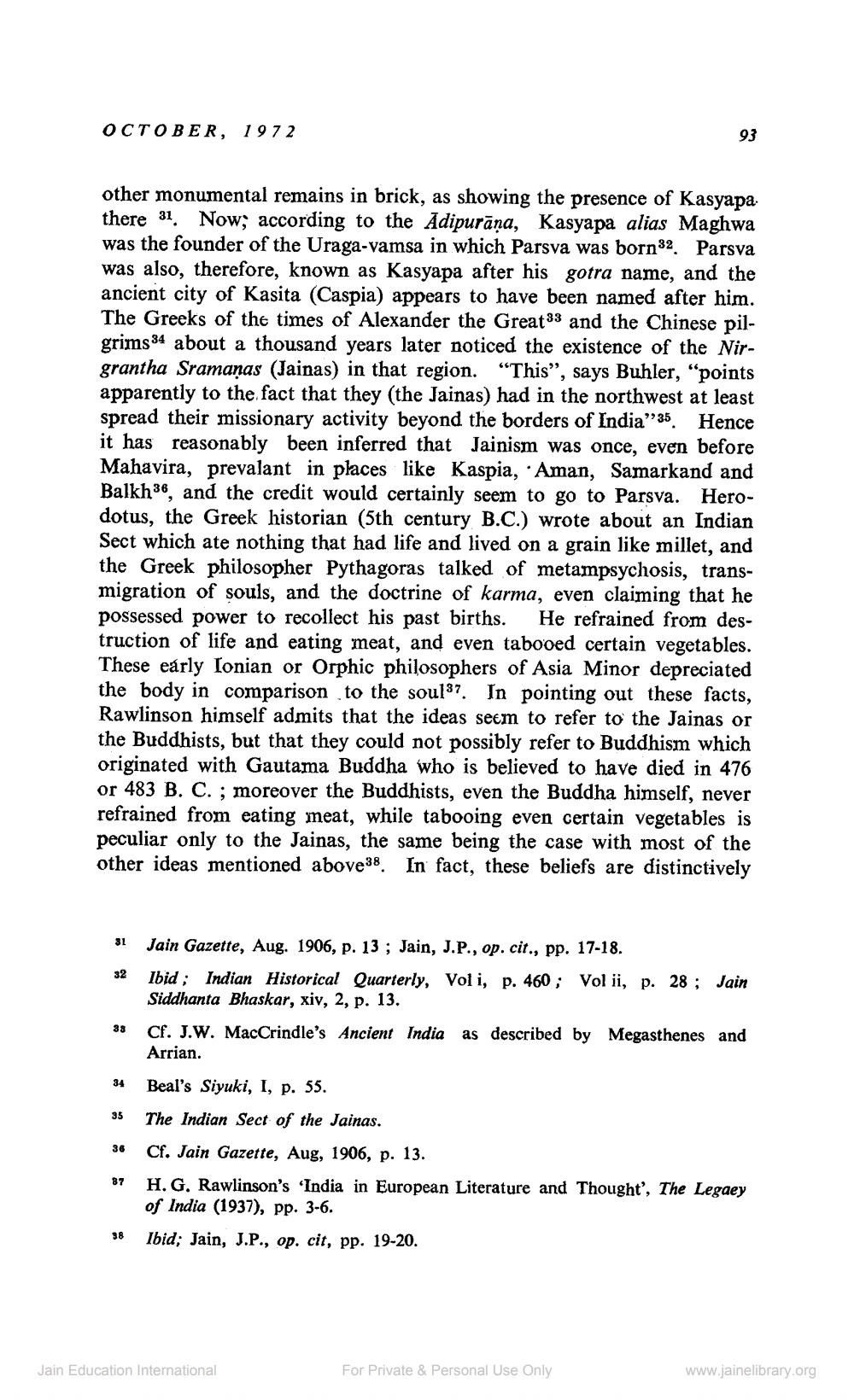________________
OCTOBER, 1972
other monumental remains in brick, as showing the presence of Kasyapa there 31. Now, according to the Adipurāna, Kasyapa alias Maghwa was the founder of the Uraga-vamsa in which Parsva was born32. Parsva was also, therefore, known as Kasyapa after his gotra name, and the ancient city of Kasita (Caspia) appears to have been named after him. The Greeks of the times of Alexander the Great33 and the Chinese pilgrims 34 about a thousand years later noticed the existence of the Nirgrantha Sramanas (Jainas) in that region. “This”, says Buhler, "points apparently to the fact that they (the Jainas) had in the northwest at least spread their missionary activity beyond the borders of India”35. Hence it has reasonably been inferred that Jainism was once, even before Mahavira, prevalant in places like Kaspia, Aman, Samarkand and Balkh 36, and the credit would certainly seem to go to Parsva. Herodotus, the Greek historian (5th century B.C.) wrote about an Indian Sect which ate nothing that had life and lived on a grain like millet, and the Greek philosopher Pythagoras talked of metampsychosis, transmigration of souls, and the doctrine of karma, even claiming that he possessed power to recollect his past births. He refrained from destruction of life and eating meat, and even tabooed certain vegetables. These early Ionian or Orphic philosophers of Asia Minor depreciated the body in comparison to the souls?. In pointing out these facts, Rawlinson himself admits that the ideas seem to refer to the Jainas or the Buddhists, but that they could not possibly refer to Buddhism which originated with Gautama Buddha who is believed to have died in 476 or 483 B. C. ; moreover the Buddhists, even the Buddha himself, never refrained from eating meat, while tabooing even certain vegetables is peculiar only to the Jainas, the same being the case with most of the other ideas mentioned above 38. In fact, these beliefs are distinctively
31 32
Jain Gazette, Aug. 1906, p. 13; Jain, J.P., op. cit., pp. 17-18. lbid; Indian Historical Quarterly, Voli, p. 460; Vol ii, p. 28 ; Jain Siddhanta Bhaskar, xiv, 2, p. 13. Cf. J.W. MacCrindle's Ancient India as described by Megasthenes and Arrian.
38
34 35
Beal's Siyuki, I, p. 55. The Indian Sect of the Jainas. Cf. Jain Gazette, Aug, 1906, p. 13. H. G. Rawlinson's 'India in European Literature and Thought, The Legaey of India (1937), pp. 3-6. Ibid; Jain, J.P., op. cit, pp. 19-20.
38
Jain Education International
For Private & Personal Use Only
www.jainelibrary.org




